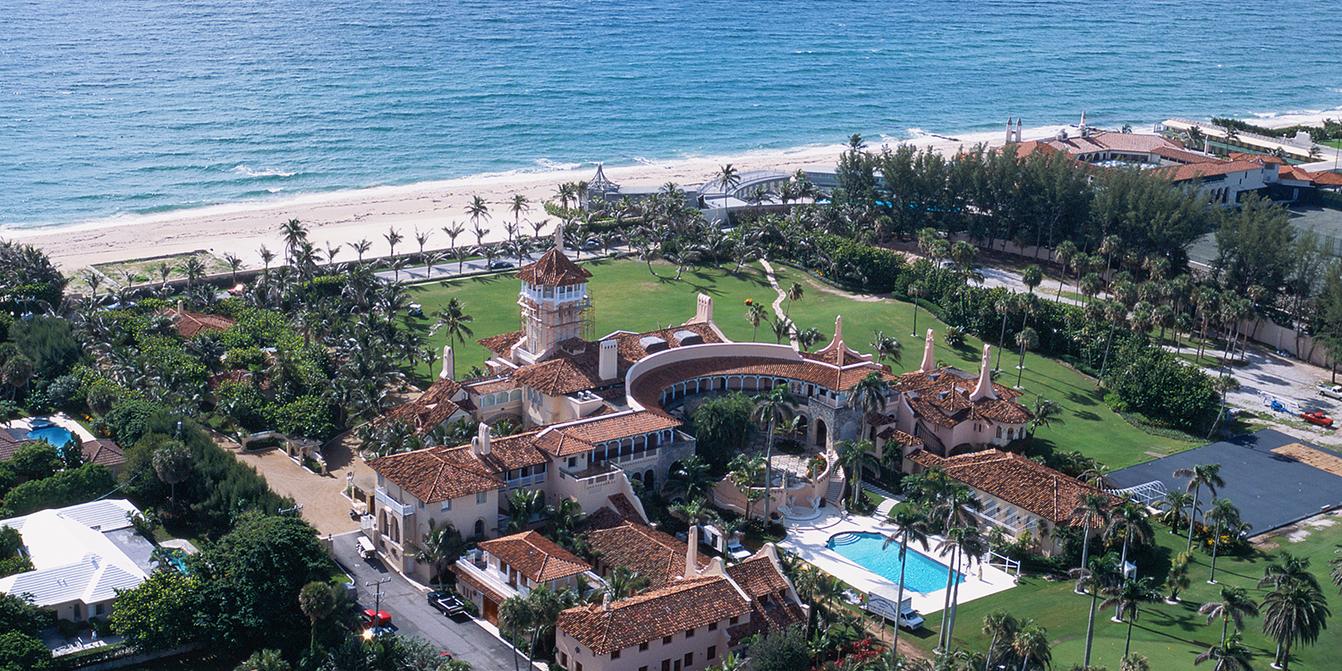In the world of real estate, few properties evoke the same sense of grandeur, history, and political weight as Mar-a-Lago—the sprawling estate owned by former U.S. President Donald J. Trump. Nestled along the glittering coastline of Palm Beach, Florida, this 20-acre mansion is not merely a private residence; it is a symbol of wealth, ambition, and the intersection between business and politics.

Built in the 1920s, Mar-a-Lago was originally commissioned by Marjorie Merriweather Post, heiress to the Post cereal fortune. Her vision was to create a palace by the sea—a winter retreat blending Mediterranean, Spanish, and Venetian architectural styles. Designed by architect Marion Sims Wyeth and adorned with opulent details by interior designer Joseph Urban, the estate features 58 bedrooms, 33 bathrooms, a 29-foot-long marble dining table, and gold-leaf detailing throughout.
When Post passed away in 1973, she left Mar-a-Lago to the U.S. government, hoping it would serve as a presidential retreat. But due to high maintenance costs and logistical challenges, it was eventually returned to the Post Foundation and later sold to Donald Trump in 1985 for a reported $10 million—a figure that included much of the mansion’s original furnishings.
From the moment Trump acquired Mar-a-Lago, he envisioned more than a home. He transformed it into a private club in 1995, opening its ornate gates to a wealthy and exclusive clientele. The Mar-a-Lago Club, as it is now known, offers members access to fine dining, luxury spa services, tennis courts, and an elaborate ballroom. It became one of the most prestigious social centers in Palm Beach, and Trump’s personal brand of opulence was embedded in every corner.
But Mar-a-Lago isn’t just notable for its luxury. It has also played an extraordinary role in American political life. During Trump’s presidency, Mar-a-Lago was referred to as the “Winter White House.” It was here that he hosted foreign dignitaries, including Chinese President Xi Jinping and Japanese Prime Minister Shinzo Abe. Critical policy discussions, diplomatic photo ops, and high-stakes strategy meetings unfolded under the crystal chandeliers and gilded mirrors of the estate.
Despite its glamour, Mar-a-Lago has also been at the center of controversy. Critics have raised concerns about national security, given the sensitive discussions held there and the club’s relative accessibility. In 2019, a Chinese woman was arrested for unlawfully entering the property, sparking debates about its security protocols. Additionally, the estate has been linked to legal investigations concerning Trump’s post-presidency handling of classified documents.
Even amid legal challenges, Trump continues to use Mar-a-Lago as both a residence and a political base. After leaving the White House in January 2021, he relocated permanently to the estate. There, he has hosted political fundraisers, met with Republican allies, and maintained a visible presence as he eyes another run for the presidency.
Beyond its political implications, Mar-a-Lago remains a testament to Trump’s lifelong fascination with luxury and his ability to turn real estate into a stage for his public persona. Gold accents, soaring ceilings, and elaborate decor reflect his signature aesthetic—bold, unapologetic, and designed to impress.
From its early days as a socialite’s seaside escape to its modern role as a Republican stronghold, Mar-a-Lago encapsulates nearly a century of American history. Whether you see it as a gaudy display of wealth or a masterstroke of branding, there’s no denying that the estate is now inextricably linked with one of the most polarizing figures in American politics.
In many ways, Mar-a-Lago is more than a home or a club—it is a reflection of Donald Trump himself: grand, controversial, and undeniably influential.







